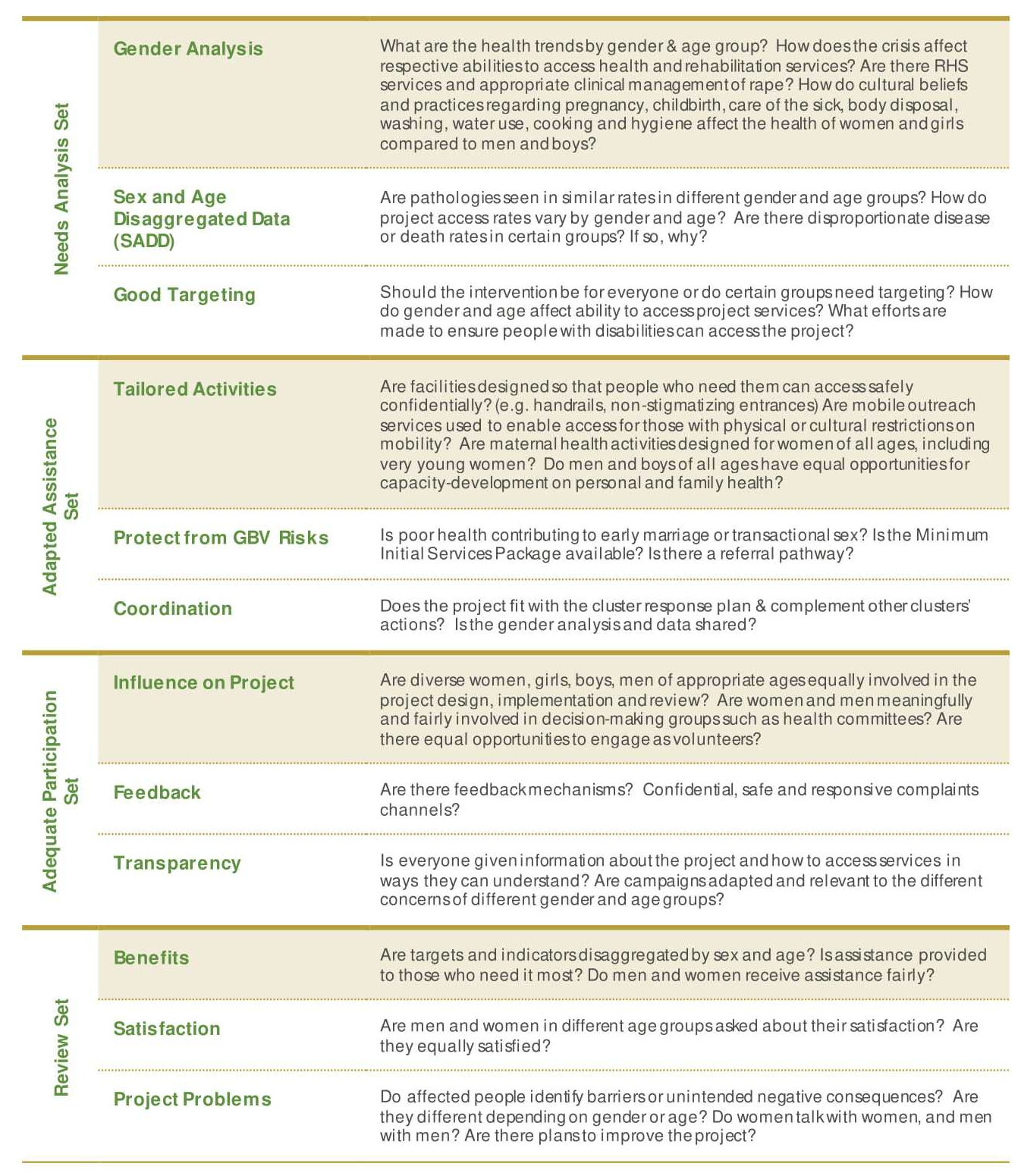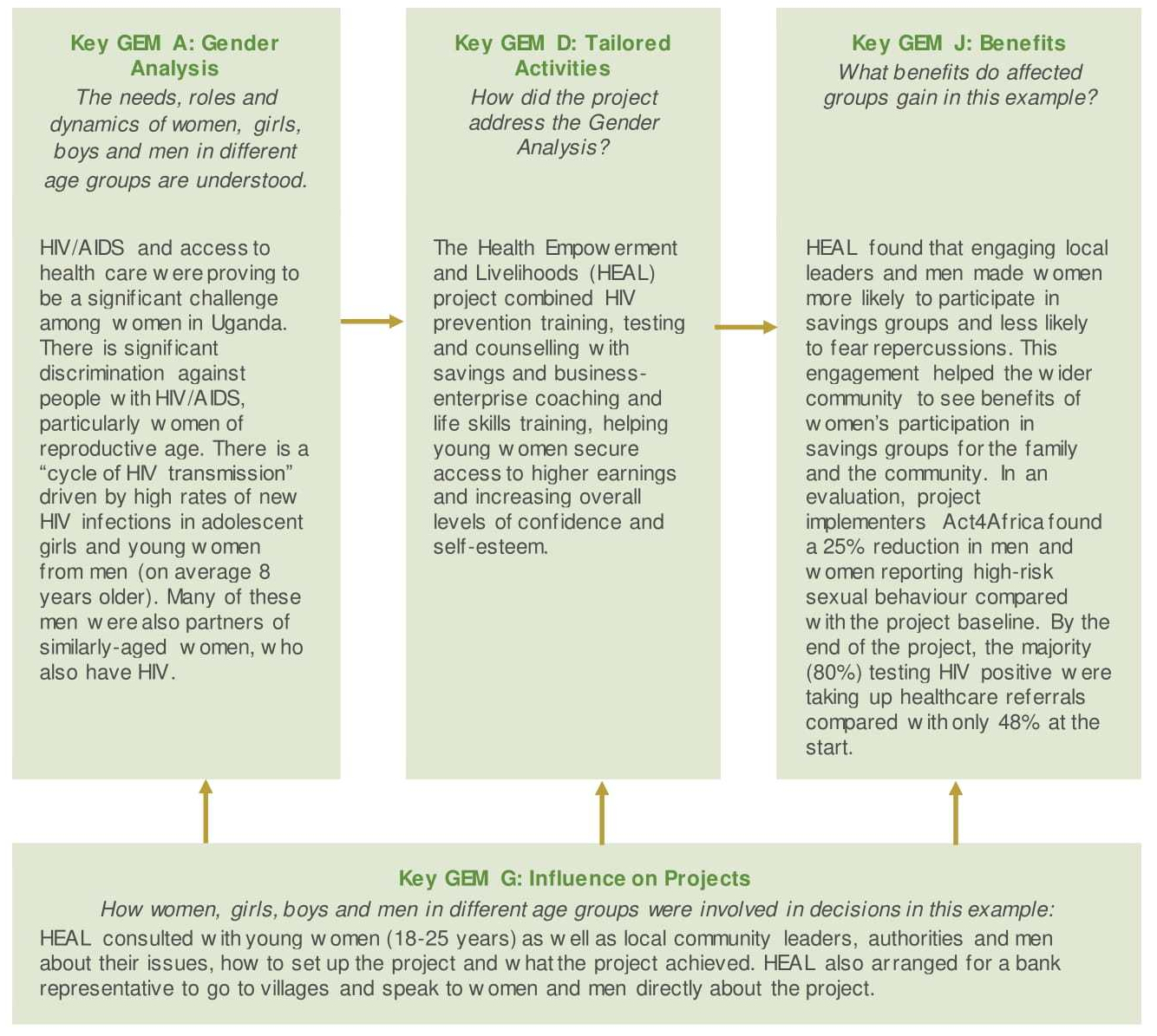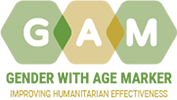This Tip Sheet offers interventions, guiding questions and an example of how 4 Key Gender Equality Measures (GEMs) support gender equality in Health projects and programs. It should be read together with the GAM Overview. The IASC GAM identifies and codes projects based on the extent to which key programming elements are consistently present in proposals and implemented projects. Four steps (GEMs) are assessed in the design phase, and twelve GEMs are reviewed in monitoring.
Gender differences can influence women’s and men’s exposure to risk factors or vulnerability, their access to and understanding of health information, differences in health status and the services they receive. When individuals do not conform to established gender norms, they may face discrimination or exclusion, with additional negative health impacts.
HEALTH interventions can make assistance responsive and fair by:
- Describe the specific priorities, needs of and the dynamics that affect women and men, girls and boys in different age groups for emergency health services;
- Design activities to address the needs, roles and power dynamics at home and in the community that might deprive groups of equal access to health services;
- Locate the types of health services based on the needs expressed by girls, boys, men and women in different age groups, including adolescent girls and boys and older women and men; and
- Record and compare the different health results for women and men, girls and boys in comparable age groups. Review activities where there are project problems, including barriers.
Questions to inspire action:

Gender mainstreaming, or a targeted action?
Some Health interventions target actions to address specific discrimination or gaps resulting from gender norms and expectations (Targeted Actions or T). For example, a project recognizing the risks of childbirth attended by unskilled traditional birth attendants seeks to improve women’s knowledge, skills, and employment potential by providing training for local midwifes, and in consultation with the community establishes a savings cooperative for payment of their incentives. Other health interventions, such as construction of a CHC, aim to serve everyone, and provide services and facilities to equally accommodate the needs and preferences of both male and female users (Gender Mainstreaming, or M.)
Example of Good Gender Equality Programming in WASH
(GAM Code 4(T) – can you work out why? See the GAM Overview)

Using Gender Equality Measures in projects or cluster programs leads to better quality programming, responsive to gender and age issues.

